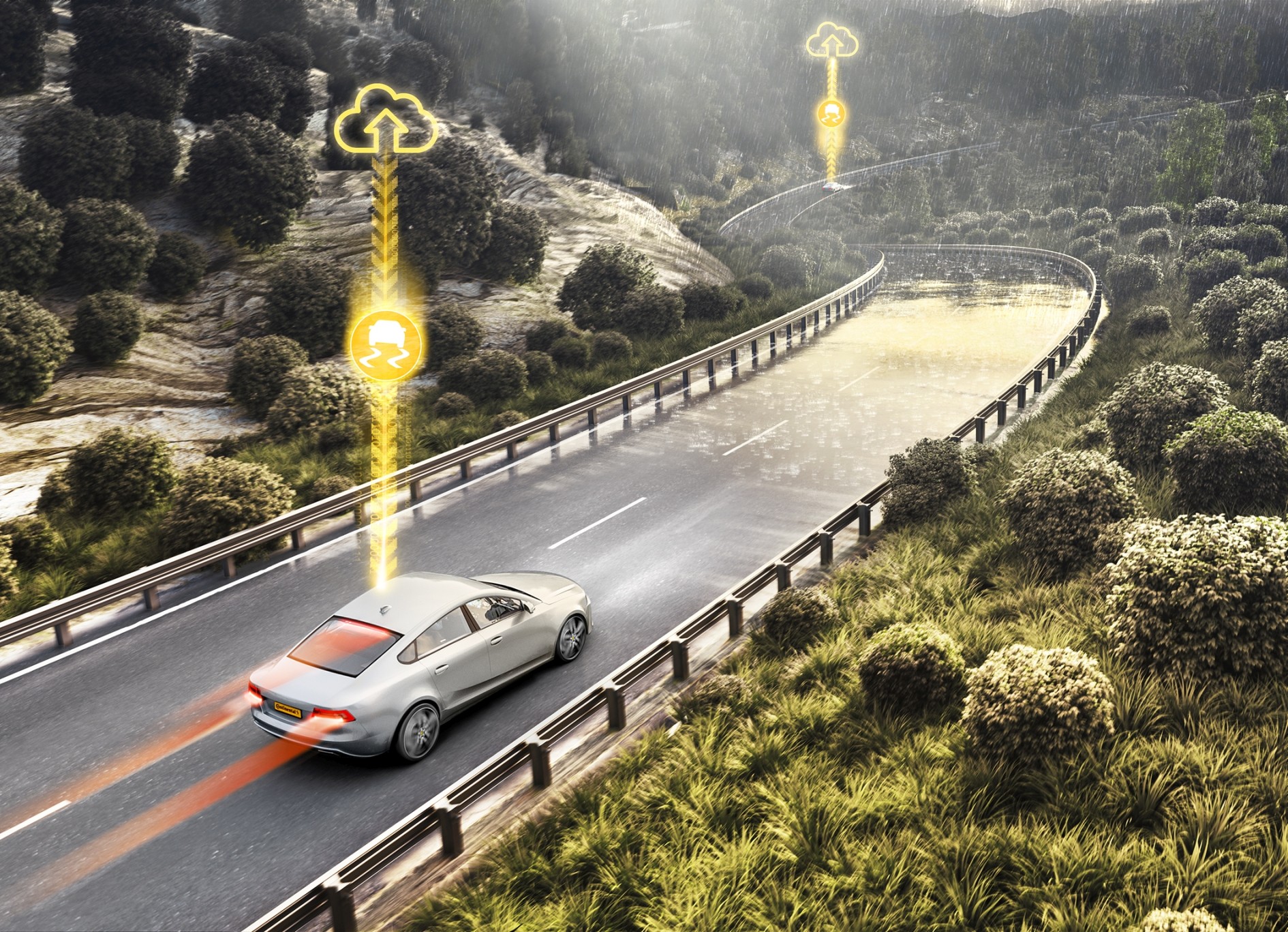Inclimate weather can quickly cause hazardous road conditions, but Continental has developed new technologies which could make your commute safer and more comfortable.
The first system is called eHorizon and it has a Road Condition Observer function which uses a vehicle’s cameras and electronic stability control system to classify road conditions as dry, wet, very wet, snow-covered or icy. Once the determination has been made, the system estimates the friction coefficient caused by current conditions.
The friction coefficient data is transmitted to the cloud and compared to the friction coefficients of other vehicles in the area. The company also examines weather data such as precipitation and the temperature. All of this information is then processed using artificial intelligence to help predict hazardous situations.
The information is then sent back to the vehicles and it can warn drivers about potential issues ahead. As eHorizon product manager Anton Klöster explained, “Think of the eHorizon as an additional, virtual sensor that networks data from various different sources, assesses it intelligently and relays it to other vehicles.”
PreviewESC builds on that technology and takes things even further. It uses the friction coefficient and the curve radius of the road ahead to determine whether or not a vehicle is traveling too fast to take the next bend. If this occurs, the system can warn the driver to slow down. Should they fail to respond, the system can automatically apply the brakes to slow the vehicle.
Some people might not like that, but the company says it’s useful for blind bends. It also helps if the driver is distracted or misjudged road conditions.
Since the system factors in road conditions, Continental says braking intervention will occur “significantly earlier” on roads that are wet or icy. It’s not only a benefit now, but in the future as well as autonomous vehicles will have to know how to handle bad road conditions.
Also Read: SUV Driver Thinks AWD Is The Only Thing You Need On A Wet Road – Wrong!
The company is also exploring other uses for the technology including the possibility of determining the optimal time to perform emergency braking functions. As Continental noted, emergency braking maneuvers “need to be initiated at different times depending on the road’s current friction coefficient to safely avoid a collision with an obstacle.”






